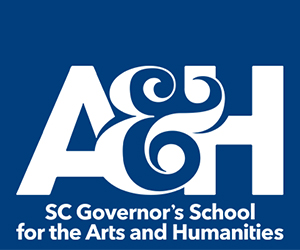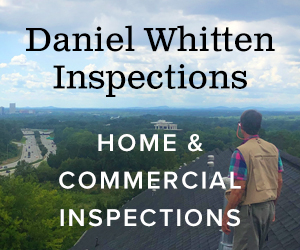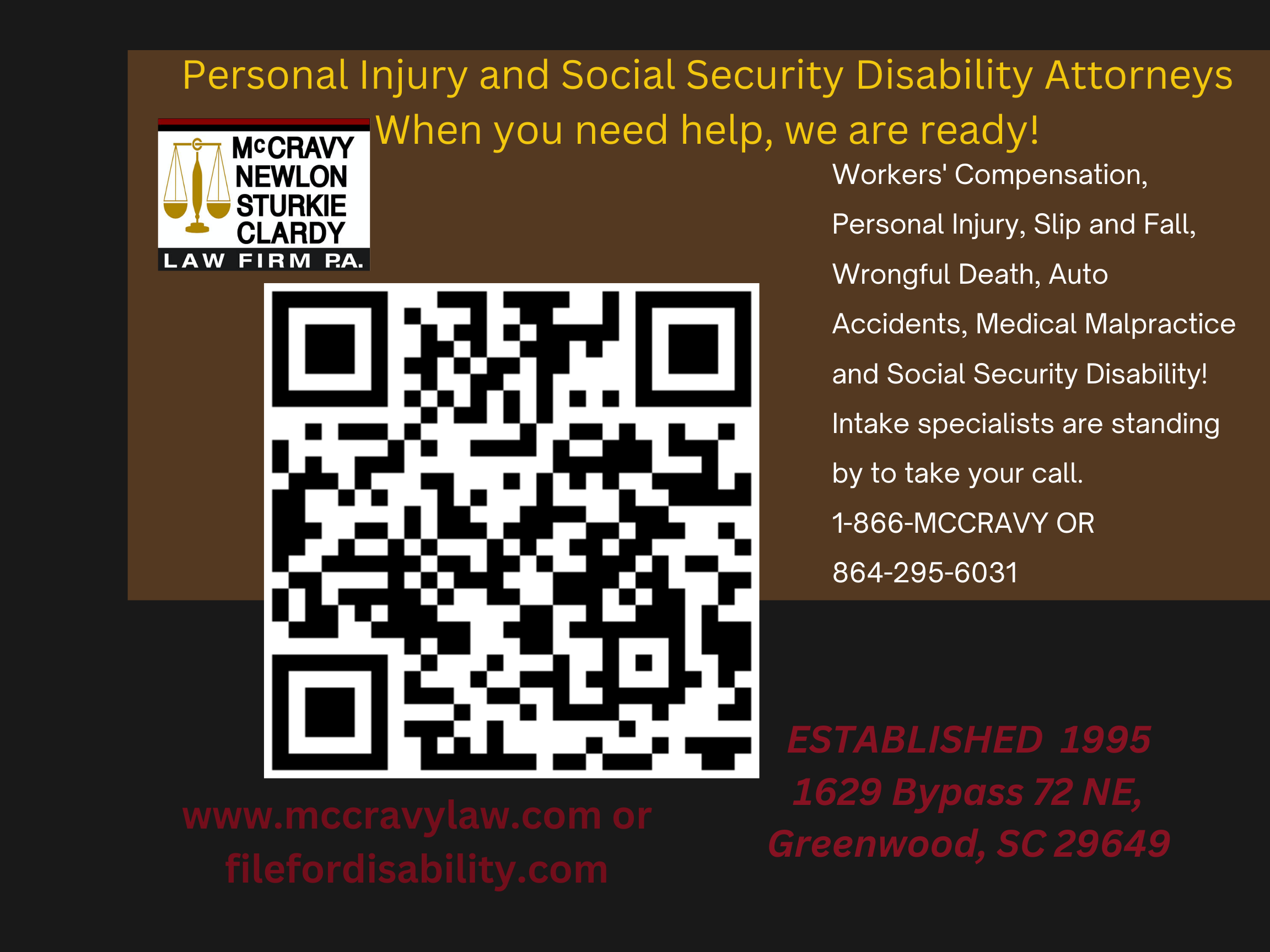Colliers Report: Investment Opportunities Strengthen
March 23, 2017Charleston Overview
The Charleston – North Charleston MSA, of Berkeley, Charleston and Dorchester counties, is located halfway between Miami and New York along the Nation’s eastern seaboard. The region, known for its beaches, hospitality and southern charm, was voted the Number 1 City in the U.S. and Number 1 City in the World by Travel and Leisure magazine in 2016. Home to more than 739,000 people, Charleston offers favorable demographics, with strong population growth and an expanding skilled, educated labor force.
The population in the MSA is currently 15% of the state population and is growing rapidly. It is expected to grow at a rate of 39 people per day over the next five years to 810,000 people. This is driven by the expansion of employment opportunities and a high quality of life in the region.
The region’s economy is largely driven by the finance, insurance, real estate, rental and leasing, manufacturing and professional and business services. Additionally, Charleston continues to rank among the top cities to visit in the nation, driving a strong tourism industry that contributes to the region’s economy. According to the Bureau of Economic Analysis (BEA), gross domestic product (GDP) for the MSA totaled $36.4 billion in 2015, accounting for 18.3% of South Carolina’s total GDP.
As of November 2016, approximately 348,400 individuals were employed by a non-agricultural job in the Charleston-North Charleston MSA. Major employment sectors include government (18,8%), trade, transportation and utilities (18.5%), professional and business services (15.3%), leisure and hospitality (12.7%) and education and health services (11.5%). The largest employers are Joint Base Charleston, Medical University of South Carolina, Boeing, College of Charleston, the school districts and health care systems.
Commercial real estate valuations in Charleston are at historic highs due to continued rent growth and cap rate compression. This, coupled with low vacancy rates, is increasing the number of construction starts across the market. Charleston’s commercial real estate markets closely mirror national trends.
To download the complete report: Q4 2016 Charleston Investment Market Report.
Investment Trends
According to Colliers International’s Chief Economist, the recovery from the economic downturn of 2008 continued through 2016 and is well into the expansion phase. In January of 2017, we reached the 90th month of consecutive economic growth in the United States. On a national level, housing prices and sales have recovered, jobs have surpassed pre-recession peaks and consumers are in better financial situations than the generation prior, thereby boosting the economy.
This is especially true in Charleston, where the expansion phase is in full swing; home sales and prices have consistently increased since the end of the recession, jobs surpassed the pre-recession peak ahead of the nation and consumers are in better financial situations, with increases in average household income across the three-county region. Economic drivers are broad and diverse – but generally are port- and manufacturing-related, specifically to Boeing, Volvo and Mercedes-Benz.
Expansion in Charleston is visible, with construction levels at record highs, overall vacancy rates trending down across most property types, average asking rental rates on the rise and more robust investor activity.
Colliers International’s Chief Economist, in the State of the U.S. Market and 2017 Outlook Report, said multifamily markets were the first to recover across the nation, then industrial, office and retail last. The trend is also true of Charleston.
- Demand for multifamily units continues to meet the rapidly growing supply in the Charleston Market. More than 8,400 market rate units delivered over the last five years, and there are nearly 4,800 market rate units set to deliver by the end of 2018.
- Charleston’s industrial market is seeing record absorption, increasingly higher occupancy rates and the highest average asking rental rates in the state. It is also seeing enhanced activity from institutional investors building and purchasing large industrial buildings.
- The office market is seeing increased vacancy in some submarkets although this could be attributed, in part, to a trend of increasing workplace density. Overall, Charleston in attracting new employers in sectors such as manufacturing, technology, finance and insurance.
- The retail market at the national level is still recovering, but in Charleston, the market is at full occupancy. High demand in the market continuously brings the average asking rental rates to new highs, quarter over quarter.
Office Investment
Investment Sales
Core plus and value add investors are attracted to the high growth economy of the Charleston region. Unfortunately, transaction volume is limited by the supply of available buildings. Despite this limitation, three additional office buildings traded in the market during the second half of 2016.
Going forward, investment sales will continue in the market as new or redeveloped buildings are leased or current owners capitalize on their investments. Charleston is expected to remain on the national radar for capital placement because of the strong underlying market fundamentals. Although a second tier market, it has an excellent reputation for job growth but high entry barriers and limited land to potentially overbuild.
There are 457,700 square feet of office space under construction throughout the Charleston market. Increasing land prices and construction costs are influencing developers to incorporate a mix of retail, office and residential space to maximize their return. These mixed-use projects allow more intensive development. Strengthening market conditions will likely encourage more development in the coming year.
Market Conditions
The average asking rental rate for the market reached a record high of $24.14 per square foot per year (PSF/YR) at the end of the fourth quarter, an increase of 4.5% since the start of 2016. More impressively, the overall vacancy rate has remained low throughout 2016, finishing the fourth quarter at 8.5%, although that is a slight uptick from the third quarter. The increase in vacancy can be attributed to the closing of the ITT campus in Upper North Charleston and other tenants shifting in the market. A vacancy rate below 10% is a sign of a strong and tight market.
Downtown
The vacancy rate in the CBD was 6.6% at the end of the fourth quarter. Office space in the downtown submarket is in such high demand that new spaces are absorbed quickly. Rising occupancy and higher demand in the CBD have increased the average asking rental rate by 4.4% to $32.73 PSF/YR over the last twelve months and by 13.6% over the last two years. Class A space saw even higher asking rental rates with an average of $36.51 PSF/YR, an increase of 4.0% from a year ago.
Suburban
The suburban vacancy rate was 9.0% at the end of the fourth quarter and is continuing to trend down. Since the start of 2016, the full-service average asking rental rate has increased by 6.9% from $21.30 PSF/YR to $22.78 PSF/YR.
Market Forecast
Continued growth and economic development across the market will continue to expand the number of new office-using tenants coming to Charleston. Existing tenants with leases signed at eight- to ten-year terms between 2007 and 2008 will continue to roll over throughout 2017 and 2018. These tenants will find it challenging to relocate to new spaces in the market without paying a significant increase in rent. Increased leasing activity will remain strong in the coming quarters and is expected to increase absorption, occupancy and asking rental rates. Economic certainty is increasing and likely to impact investor activity in the market with positive market fundamentals continuing to improve and interest rates remaining low.
Industrial Investment
Investment Sales
The recent Volvo announcement, Daimler’s expansion and Boeing’s manufacturing facility have attracted tier one and two suppliers and other manufacturers in related industries to the Charleston market. Volvo is constructing a 2.3 million-square-foot facility, Daimler is adding a 1.1 million-square-foot expansion to an existing 409,000-square-foot facility and Boeing just completed a paint hangar that brings their presence in Charleston to 4 million square feet. These investments are creating a wave of demand for industrial buildings in the region from automotive and aerospace suppliers and distributors. This demand, coupled with low vacancy, has increased the need for new development.
Institutional developers and investors like Clarius Partners, Rockefeller Group, CenterPoint Properties, SunCap, Exeter and Gramercy Property Trust are most active in Charleston. Clarius is developing a 587,700-square-foot speculative building with 36-foot clearance height in Omni Industrial Campus. SunCap Property Group recently completed a speculative building with WestRock in the North Pointe Business Campus.
These investors are also acquiring well-positioned assets. CenterPoint Properties purchased three buildings at 1125 Newton Way, a total of 615,000 square feet, in Summerville this quarter. Gramercy Property Trust purchased a 1.1 million-square-foot building occupied by TBC in the Rockefeller-MeadWestvaco Foreign Trade Zone, while Exeter purchased a 278,700-square-foot building in the Charleston Regional Business Center. These investors are expanding their Charleston portfolios, thereby attracting new institutional developers and increasing activity from regional investors as well. The trend is expected to continue through 2017.
Construction
Development activity remains high in the Charleston market, with 3.2 million square feet under construction, 1.7 million of which is build-to-suit projects. Build-to-suits are becoming more common as large manufacturers and suppliers move to the market. The remainder is speculative buildings, several of which are set to deliver in the first half of 2017.
Market Conditions
The Charleston industrial market continues to tighten. During 2016, more than 2.5 million square feet were absorbed, bringing the market vacancy rate to 4.2% from 8.5% at the start of 2016. The Charleston industrial market has the highest average asking rental rate for industrial space in South Carolina. At the end of the fourth quarter, the average asking rental rate was $4.77 per square foot per year triple net (PSF/YR NNN) for industrial space. Only two years ago, the average asking rental rate was $4.16 PSF/YR NNN, a 14.7% increase to today.
The Hanahan / North Rhett submarket ended 2016 strong, with a vacancy rate of 5.6%, down from 17.4% at the beginning of the year, absorbing a total of 485,800 square feet in 2016. This was led by the Premier Logistics and AmerCare leases. In 2015, the submarket saw just 11,000 square feet of absorption.
North Charleston is the largest industrial submarket in Charleston, comprising 40% of the total market inventory. Due to nearly 269,000 square feet of positive net absorption this year, the vacancy rate at the end of 2016 was 4.9% in the North Charleston submarket. At the start of the year, the vacancy rate was 5.5%.
The vacancy rate in the Summerville submarket was 0.8% at the end of the fourth quarter, a decrease from 10.4% at the start of 2016. The large shift in occupancy is due to the positive net absorption of 1.3 million square feet. The majority of this can be attributed to Zinus leasing 473,000 square feet in the former Piggly Wiggly distribution center in the third quarter and the delivery of the 477,000-square-foot Gerber Childrenswear facility at full occupancy in the first quarter.
Market Forecast
The coming quarters are expected to see continued healthy absorption as activity from new and expanding tenants and institutional investment increases. Prospective tenants will begin to see more large speculative properties come to market over the next six months. Additionally, continued economic development and infrastructure improvements will attract new prospects to the market. The Charleston Harbor Deepening Project will play a key role in the movement of goods throughout regional and global markets and in leveraging South Carolina as a strong industrial market to investors, developers and national and global companies.
Retail Investment
Investment Sales
Retail investment opportunities are highly sought after in Charleston, limited only by the few investment sale opportunities offered. In other words, buyers want to buy but the sellers will not sell.
The rapid expansion of the population and tourism are the primary drivers of the retail market in Charleston. Charleston’s population is expected to grow at a rate of 39 people per day over the next five years to more than 810,000 people, making it one of the fastest growing in the nation. Tourism has grown substantially over the past 10 years, with 556 new hotel rooms added in the past two years and arrivals at the Charleston Airport growing to 1.9 million people, twice the number of arrivals ten years ago. Together, this is demanding increasing amounts of retail. Increased demand for retail space has brought the market vacancy to 6.2% and the average asking rental rate for shop space to $23.24 per square foot per year (PSF/YR).
Going forward, investment sales will continue in the market as new or redeveloped buildings are leased or current owners capitalize on their investments. Charleston is expected to remain on the national radar for capital placement because of the strong underlying market fundamentals, despite its second tier status.
Construction
More than 305,300 square feet of retail space are under construction throughout the Charleston market, 42.5% of which is in Summerville. Activity in the submarket is expected to continue with another 194,000 square feet planned.
Increasing land prices and construction costs are influencing developers to incorporate a mix of retail, office and residential space to maximize their return. These mixed-use projects allow more intensive development and increase Charleston’s walkability. Strengthening market conditions will likely encourage more development in the coming year.
Market Conditions
The Charleston retail market continues to tighten. The market vacancy rate reached 6.2% at the end of the fourth quarter. The average asking rental rate for shop space was $23.27 PSF/YR NNN, up from $19.88 PSF/YR NNN at the start of 2016. Suburban vacancy is lower than the overall market at 5.9%. The average asking rental rate for shop space in suburban shopping centers was $19.61, although asking rents in some well-positioned centers have reached $40 PSF.
Gross Retail Sales
Charleston’s growing population and tourism sector drive gross retail sales. The South Carolina Department of Revenue reported gross retail sales as $3.5 billion for the month of June 2016 for the Charleston – North Charleston, MSA, a 39.4% increase from the $2.1 billion reported in June of 2015.
Market Forecast
A growing residential population, job creation and a thriving tourism economy will continue to drive spending and expansion of retailers in the Charleston area. Several large master planned communities in the Summerville area will lead to the continued expansion of the Charleston retail market to the northwest. Grocers and other national retailers will lead the way in anchoring these large developments and grocers will continue to expand in the other retail submarkets. Demand for space will continue to increase, leading to further decline in market vacancy rates and escalating the average asking rental rates for retail spaces.
Multifamily Investment
New residents are attracted to the Charleston area due to the growth of employment opportunities and a high quality of life. Since the turn of the century, nearly 200,000 people have moved to the three-county area. Employment has jumped 32 percent over the same period, driven by tourism, defense contractors, the automotive sector (Daimler-Benz and Volvo) and the construction of Boeing’s first production facility outside Seattle.
Many of the new residents are renters who fall in one of two age classes: Millennials between 20 and 34 years of age, and retirees or Empty Nesters between 50 and 69 years of age. The live, work and play environment and job mobility attract Millennials to rent, whereas retirees and Empty Nesters are able to take advantage of the strengthening housing market to downsize to apartments or buy lock-and-leave weekend homes. The 2010 Census reported about 154,000 Millennials between the ages of 25 and 34 and 151,000 persons between 50 and 69 living in the Charleston tri-county area. Esri has since estimated the 2016 population for these age groups to be 167,000 and 179,000, respectively, contributing to a 10.1% increase in the overall population. More importantly, the figures show ages 20-34 have grown 8.4% since 2010, while the 50-69 age sector has exploded by 18.5%.
Investment Sales
Conditions remain favorable for investment sales across the nation, and Charleston is no exception. This is due to the strengthening local economy, rising occupancy and rental rates, low interest rates and a demand for quality apartments. Eight apartment communities sold in the second half of 2016, totaling $267.8 million in sales volume, more than twice the sales volume of the first half of 2016.
Construction
Multifamily construction has reached record levels, with nearly 8,400 units delivered over the last five years and another 4,800 units which will deliver by January 2018. Over half of those units, 53.5%, are located in West Ashley, downtown or on Daniel Island. The construction pipeline shows another 5,748 units planned, the bulk of which are in the Downtown and West Ashley submarkets. Once these planned communities deliver, Charleston’s multifamily market will total more than 47,800 units, a 16.3% increase. As a result, there is a shortage of entitled land, construction labor and materials. These factors are raising the overall cost of development.
Market Conditions
Charleston’s multifamily market is composed of 37,269 units across 177 properties. The majority of Charleston’s inventory is classified as the Upper Mid-Range or Low Mid-Range property asset classes. The 4,800 units under construction will fall in these two ranges as well. Despite the enormous amount of construction, the growing population has held the market occupancy rate fairly steady. The occupancy rate at the end of the fourth quarter of 2016 was 94.5%, a slight dip from 95.0% at the end of the second quarter of 2016. The net absorption for 2016 was 577 units, despite 2,012 units added to the inventory in 2016.
The market average rental rate for multifamily units in Charleston has risen to $1,152 per unit in Q4 2016 from $1,074 per unit a year ago, a 7.2% increase. The average rent per square foot (PSF) increased to $1.18 PSF at the end of 2016 compared to $1.13 PSF at the end of the first half of 2016. For new product, delivered between mid-2015 to mid-2016, the average rental rate is $1,652 per unit or $1.76 PSF, 49.2% higher than the overall market average.
Market Forecast
With just over 3,700 new units currently planned to begin construction, combined with the 1,800 units set to deliver in the next 18 months, the market appears to be quickly approaching the hyper supply phase of the development cycle. However, demand continues as a result of continued population and household formation. As long as jobs are created and Charleston continues to receive repeated accolades of travel, housing and foodie enthusiasts, we expect the multifamily market will continue to flourish. However, Daniel Island and Mount Pleasant may see fluctuations in growth as demand catches up with new product deliveries. As a result, lenders and equity sources are taking a temporary “breather” on Charleston multifamily opportunities.
Employment
A strengthening economy and growing number of major employers in the Charleston – North Charleston MSA has contributed to a positive upwards trend in non-farm employment, increasing by 3.3% over the last year, adding a total of 11,000 new jobs. Employment in the MSA was recorded as 348,400 people in November of 2016.
Industrial Employment
Industrial employment, those jobs related to the manufacturing and whole sale trade sectors, are growing in the Charleston-North Charleston Metropolitan Statistical Area (MSA), despite a slight drop in total non-farm employment in the MSA. According to the most recent data from the Bureau of Labor Statistics, since November of 2015, 1,700 industrial jobs have been added to the MSA, 16.0% of the total number of jobs added over the same time period. Industrial employment has seen a growth from 33,300 jobs in November 2014 to 35,900 jobs in November 2016, a 7.8% growth. Robust interest in the Charleston industrial market, coupled with new capital investments, is expected to continue this upward trend for industrial employment.
Office-Using Employment
Office-using employment, those jobs related to the professional and business services, financial activities, and information sectors are also growing within the Charleston-North Charleston Metropolitan Statistical Area (MSA). According to the most recent November 2016 data from the Bureau of Labor Statistics, 5,300 office-using jobs were added over the last 12 months. Office-using employment as of November 2016 accounts for 21.3% of total non-farm employment in the Charleston-North Charleston MSA and accounted for 48.2% of all new jobs added to the MSA over the last 12 months. As the employment sector continues to grow, the market will experience additional demand for space.
Around South Carolina
The investment sales transaction volume for the second half of 2016 was $2.1 billion across the state. The multifamily markets saw the most activity with $1.1 billion in transaction volume, 52.2% of the total transaction volume.
Columbia, South Carolina
- The Columbia market saw $661 million in transaction volume. Multifamily comprised 59.6% of total transaction volume, and office comprised 17.1%.
Greenville, South Carolina
- The Greenville market saw $748.9 million in transaction volume. Multifamily comprised 41.9% of total transaction volume and office comprised 28.7%. Five office buildings in the central business district sold to investors in the fourth quarter alone.
For statewide commercial real estate news check out our market reports at: www.colliers.com/southcarolina/insights.
To download the complete report: Q4 2016 Charleston Investment Market Report.

















